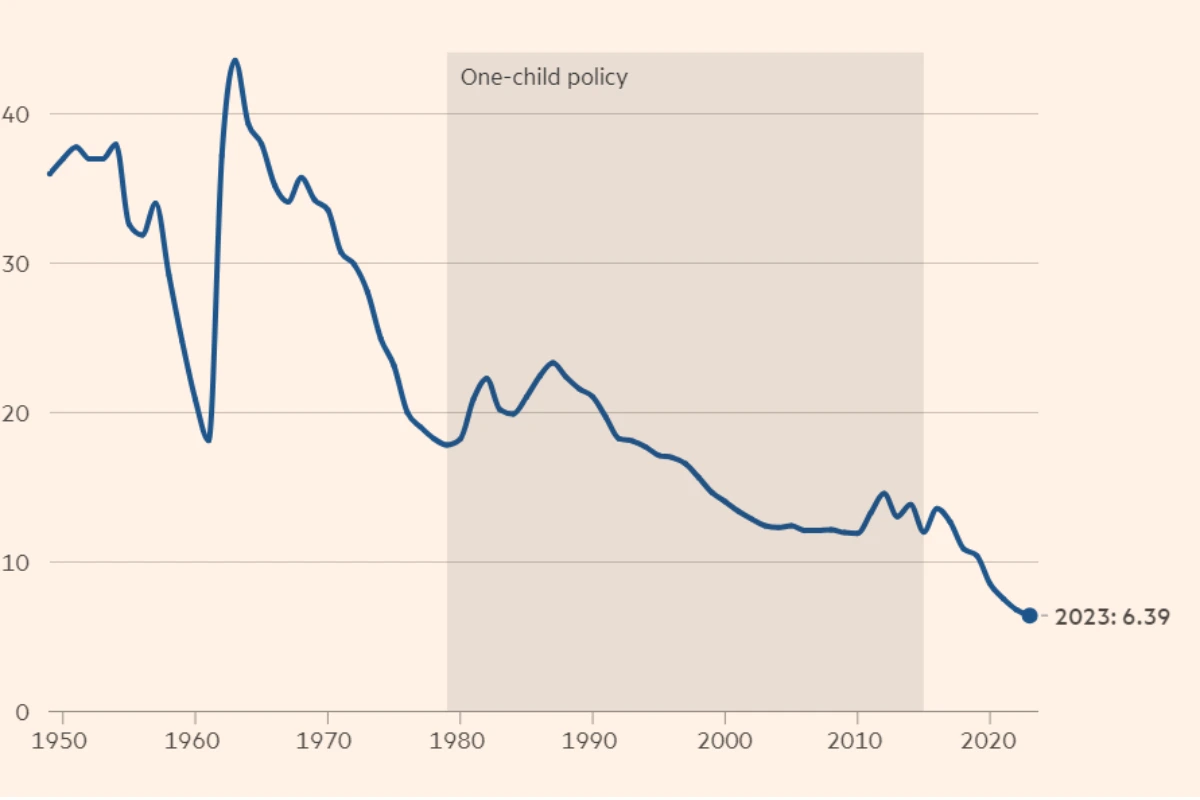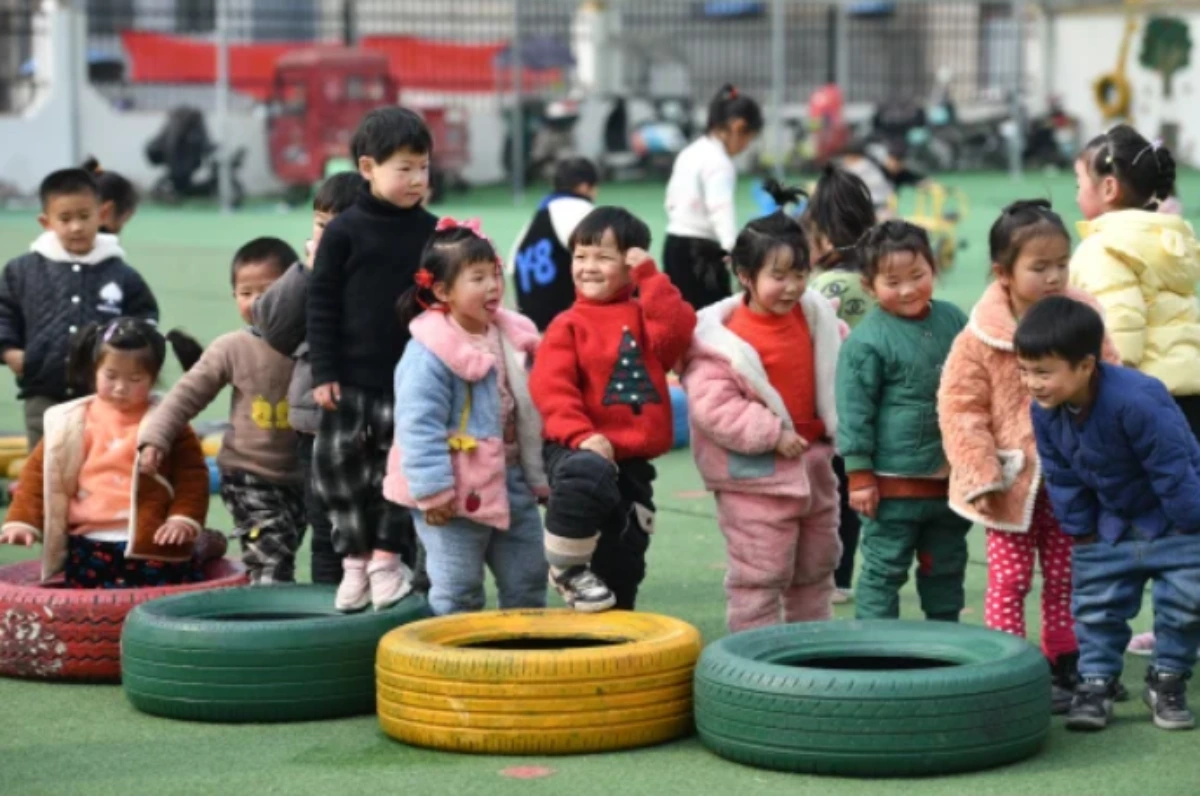China’s Population Decline in 2023: Unraveling Demographic Trends and Economic Challenges
The National Bureau of Statistics of China (NBS) revealed on Wednesday, in an unexpected development, that the China’s Population Decline in 2023 for the second year in a row, to 1,409.7 million (1.41 billion). Concerns have been raised by this 2.08 million drop from 2022, particularly as estimates suggest that China may lose the title of “most populous country” to India in 2023. The current data indicates broader demographic trends, in contrast to previous losses in the 1960s. Let’s examine the information to determine the implications of these trends for China.
Variables Affecting the Population drop: In contrast to past trends, a number of variables are responsible for the population drop in China. In contrast to the brief decreases in the 1960s, more significant demographic changes are driving the current trend. The COVID-19 pandemic’s aftereffects, an aging population, and an extended economic downturn are all cited as major causes of the population decline.
China’s Death-to-Birth Ratio: According to official figures, there will be a 2 million difference between the number of deaths and births in 2023, indicating a serious imbalance. Compared to 9.6 million births in 2022, the nation saw 11 million deaths and 9 million births. There are worries about the long-term effects for China due to the rapid population loss, which has more than doubled from the previous year. Its effect China’s Population Decline in 2023 figure.
Economic Impact and Policy Reactions: Amid persistent property market declines, weak exports, and low investor confidence, China’s Population Decline in 2023 is posing a challenging issue. Last year, India overtook the country as the most populous country in the world. This year is crucial, according to economists, for China to restore growth drivers and prevent a dangerous debt-deflation spiral.
Attempts to Redress Falling Birth Rates: China has been facing a persistent drop in the number of births annually even after the one-child policy was loosened in 2016. The population began to shrink in 2022 for the first time in decades, and in 2023 there was an additional 850,000 decline. Since subsidized programs and policy changes have not produced the anticipated results, policymakers are left with few options for encouraging births.

The Significance of the Dragon Year: In the past, parents have aimed to line their children’s births with an auspicious zodiac sign, hence the year of the dragon has been linked to an increase in births in China and other East Asian nations. Experts, however, are skeptical that this demographic phenomena would improve the current social and economic environment. The pandemic’s effects, aging populations, and economic pessimism are impacting the choices of potential parents, impeding the anticipated rise in births during the dragon year.
Mutually Reinforcing loop: According to economists, low birth rates and economic depression are linked in a mutually reinforcing loop. China’s consumer price index, which reflects consumers’ skepticism about the country’s economic recovery, is still in deflationary zone. People who are thinking about establishing a family become discouraged by economic uncertainty, which creates a vicious cycle that presents difficulties for policymakers.
Chinese women encounter particular difficulties, even as governments look for ways to stop the birth rate from dropping. A low desire for childbirth is a result of a combination of factors such as economic pessimism, worries about the expense of schooling, and professional consequences for mothers. Women are discouraged from starting families even more by the “professional penalty” that working moms face, wherein their jobs are frequently taken away and promotions are less likely which is also effect China’s Population Decline in 2023 drastically.
Government’s Shift in Focus: China’s State Council has called for investment in a “silver economy” as a means of responding to the demographic concerns. This strategy emphasizes pension, healthcare, and leisure service investments in order to meet the requirements of the aging population. The recognition of the aging population suggests a more comprehensive approach to adjust to the shifting demographics.
In conclusion, there are several aspects of China’s shrinking population to consider, including social, economic, and policy issues. In the face of a changing population, governments must strike a difficult balance between promoting childbearing and economic restoration. The dragon year, which is customarily linked to a rise in births, might not offer the expected respite, considering the current state of the economy and society. A comprehensive strategy that tackles economic issues, assists working mothers, and adjusts to demographic shifts becomes essential for China’s continued prosperity and stability as it navigates these difficulties. Follow along for updates on China’s response to this changing demographic picture.
You may also Read our Finance, World News, Local News, Health, Food, and Education articles.
খাসটাইমস বাংলা সম্পর্কে আরও বিস্তারিত ও নতুন খবর জানতে ক্লিক করুন। সব ধরনের ব্রেকিং, আপডেট এবং বিশ্লেষণ সবার প্রথম বাংলায় পড়তে ক্লিক করুন।

